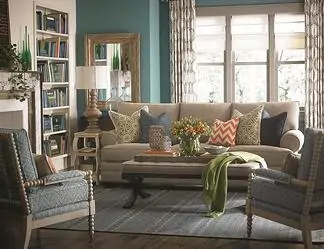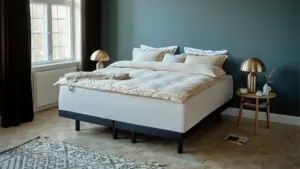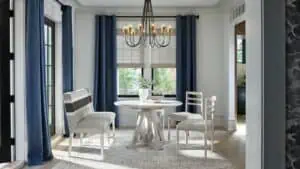Start by following these ten simple tips.
1. Take baby steps.
Painting a whole room is a big project, and you won’t want to start all over again if you’re unhappy with the final product. Start with a small space instead, like a bathroom or closet wall. Get used to the feeling of a new shade in a familiar place; you might realize that a slightly different shade or texture would be better.
2. Set the right tone.
Harness the power of color to transform your own attitude on a daily basis. Stick to a color with the right volume, energy and ambiance for the room and its inhabitants. Should it be a stimulating, exciting space with bright yellows and reds, or a relaxing retreat with muted earth tones?

This is your chance to play with the paint color! Take advantage of paint samples and spare wood or cardboard, and experiment with color combinations you’d never consider. If you’re in the middle of renovations and it’s okay to paint the surfaces in progress, grab some brushes and improvise. Paint the ceiling and floor for a different perspective; you never know what you might discover.
4. Study the vocabulary.
There won’t be a quiz, but there might as well be. Unless you know how to read and speak about your paint choices, you won’t be able to make informed decisions. The following three words are particularly important:
- Hue — the color itself
- Saturation — the dominance of that hue
- Intensity — the brilliance of the original color
Know the difference, and experiment with different combinations to see how they interact with each other. To avoid a monotonous or overwhelming effect, you should combine at least three different saturation and intensity levels throughout the same space.
5. Look at the lights.
That paint sample doesn’t mean very much unless you consider the lighting conditions. Which windows and light fixtures will illuminate the paint? Will natural daylight showcase its true state, or will it look warmer (because of incandescent lights) or cooler (because of fluorescent lights)? Stick to subdued shades for walls that get a lot of direct sunlight, and complement them with a vivid accent wall. At night, add drama with indirect and diffused lamplight.
6. Take a walk.
If you spend too much time thinking about one room, you might lose sight of the larger project. Your home is a whole space, and each unit should be a seamless part of it. Even if you design the perfect room, it doesn’t exist in a bubble. Walk through your house, noticing the transition between color schemes and design themes. Go outside and look into the room through a window. Get a sense of the space it shares with other colors, and you might instinctively know how to fill in the blank.
7. Go monochrome.
Monochromatic color schemes are a timeless design trick, and they’re not just for all-white rooms anymore. Pick one bold, rich hue to dominate your walls, then paint the trim, fixtures and furnishings with shades that match that hue — but not the texture, intensity or saturation.
8. Opposites attract.
Shoot for variety and creativity, rather than organizing your colors like they belong in a crayon box. To avoid a palette that clashes and overwhelms, just make sure your colors come in complementary pairs. When you fall in love with a unique shade of coral or wine red, find it on a color wheel and look up its exact opposite. Now you have your two dominant colors.
9. Order it in every finish.
Sometimes it’s okay to use the same exact paint for all four walls and all the trim, too. You just need to select different finishes, and use them throughout the space. For example, the window trim could be metallic, the crown molding glossy, and the wall itself matte.
10. Give it texture.
Every year, new glazes take the paint world by storm. Explore your glaze options, especially if you’re painting an outdoor space or a sprawling common area. By breaking up your walls with varying textures and finishes, you’ll give the whole space more character and dimension.









